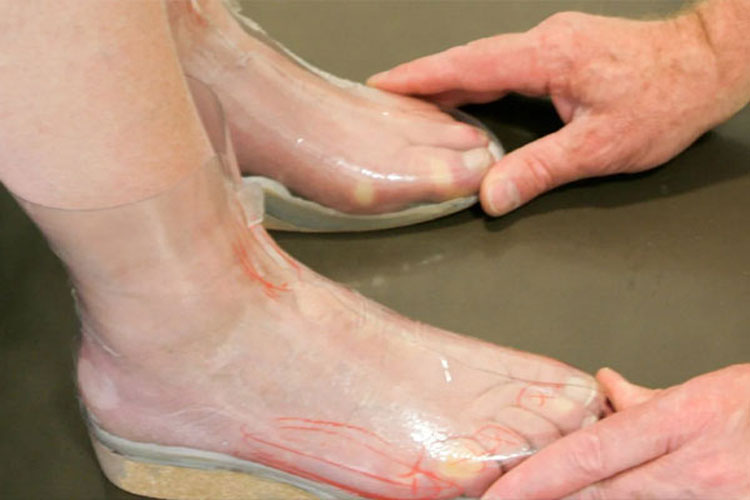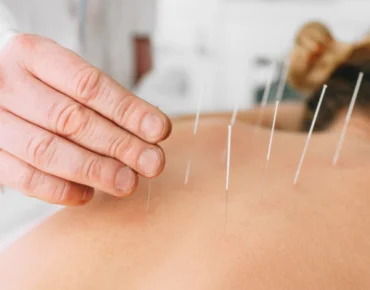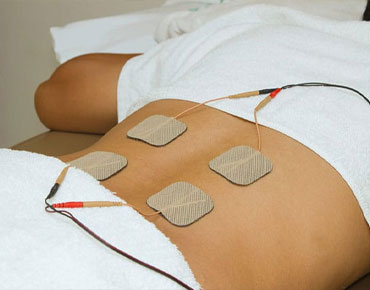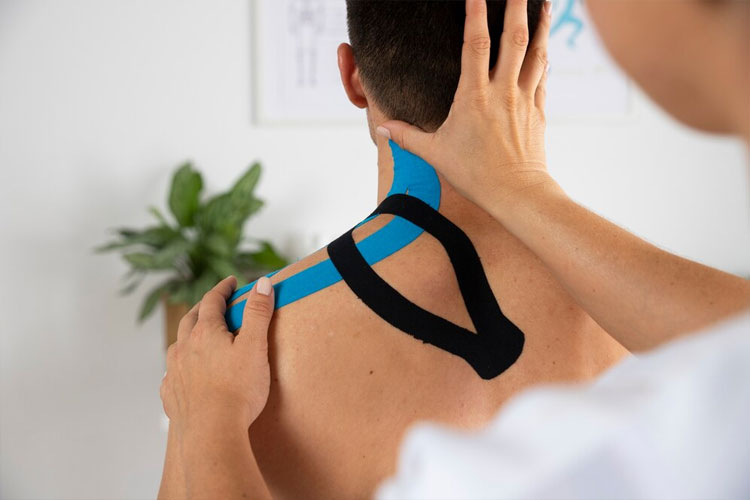
MindBody Physiotherapy & Wellness Clinic
- 107 Hawthorn Way Unit 6, Leduc, AB T9E 0B1
- Mon to Fri 9:00am to 6:00pm
-
Call us anytime
+1 (587) 468-1818
-
Write a mail
info@mindbodyphysio.ca
- Book Appointment
Blog Details
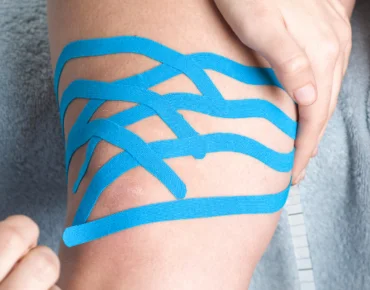 Thu Jul 6
Thu Jul 6
Types of Taping Techniques: Your Ultimate Guide
Physiotherapists use innovative taping techniques to support the recovery of patients with soft tissue injuries, such as trapezius strains or sporting injuries. These techniques involve using therapeutic tape, which provides stability and support for injured tendons and muscles during rehabilitation.
Joint stability and performance enhancement can be achieved through the use of kinesio tape, therapeutic tape, kinesiological tape, or elastic tape. Taping methods are commonly used by physios across the globe, including those at Rose City Physical Therapy, to effectively treat conditions such as patellofemoral pain syndrome and muscle spasms in the trapezius. These techniques make a real difference in helping patients get back on track.
By applying compression and supporting soft tissues with therapeutic tape, such as kinesio tape or elastic tape, taping techniques target specific areas of concern. The result? Improved mobility and reduced discomfort. So if you're ready to explore the world of taping in physiotherapy, let's dive right in!
Benefits and Uses of Taping in Physiotherapy Treatment
Taping techniques, such as therapeutic tape or kinesio tape, can be incredibly beneficial for individuals undergoing physiotherapy treatment. These techniques not only provide support to injured tissues but also help reduce pain and inflammation. Let's explore the various benefits and uses of kinesiological tape in physiotherapy with a physical therapist.
Pain Relief
One of the primary advantages of taping techniques for physical therapists is their ability to alleviate pain in patients. By providing support to injured trapezius muscles and promoting proper body mechanics, tapes can help stabilize joints, reducing discomfort and allowing individuals to move with greater ease. This pain relief is particularly useful for those recovering from sports injuries or dealing with chronic conditions such as arthritis.
Support for Injured Tissues
Kinesiology taping, also known as athletic taping or patellar taping, is a technique used by physical therapists to promote proper alignment and biomechanics during the recovery process. Tapes, when applied correctly, provide stability to weakened or damaged muscles, tendons, ligaments, or joints. This support helps prevent further injury and enhances the healing process.
Enhanced Proprioception
Another significant benefit of taping is its impact on proprioception – our body's awareness of its position in space. Tapes can enhance proprioception by providing sensory feedback to the brain through skin receptors. This increased awareness enables physio ready individuals to have better control over their movements, reducing the risk of re-injury or compensatory movements that could hinder recovery. The flexion correction technique has important clinical implications.

Versatility in Application
Taping techniques, such as kinesiological tape, have diverse applications across different areas of the body. They can be used to treat various conditions, with indications and clinical implications in mind. One common application is using kinesiological tape for flexion-related issues.
- Ankle taping: Provides stability and support for sprained ankles.
- Knee taping is a helpful technique for patients suffering from conditions like patellofemoral pain syndrome. It can alleviate pain and has clinical implications for patients seeking relief. This correction technique can be used as an indication for managing pain in the knee.
- Shoulder taping is an effective correction technique that helps stabilize shoulder joints in patients who have experienced dislocations or rotator cuff injuries. It serves as an indication for the objective of providing support and stability to the affected area.
- Wrist taping is a technique used to support the ligaments of the patient's wrist during activities that require repetitive motion. The objective is to provide stability and prevent injury.
- Back taping is a technique that provides additional support to the lower back, helping to reduce strain and discomfort for the patient in a seated or lying position. The objective of back taping is to offer support and alleviate discomfort in the lower back.
Complementary Treatment Option
Taping techniques are often used in conjunction with other physiotherapy treatments to provide additional support and pain relief for patients. They can complement exercises, manual therapy, and other interventions, enhancing the effectiveness of a treatment plan and helping individuals recover more efficiently.
Overview of Rigid Strapping Tape and Its Application
Rigid strapping tape, also known as athletic taping or protective tape, is a powerful adhesive tape commonly used for joint stabilization. It offers a reliable solution for athletes and individuals seeking support and protection during physical activities. This article will delve into the various aspects of rigid strapping tape, including its purpose, benefits, and application techniques such as kinesiology taping, patellar taping, and mcconnell taping.
Athletic taping, such as rigid strapping tape, serves the objective of providing essential support to ligaments and joints. It restricts excessive mobility, reducing the risk of further injury for athletes participating in high-impact sports like basketball, soccer, or rugby. The strong adhesive properties of this tape make it an ideal choice.
The objective of the application process of rigid strapping tape involves specific wrapping techniques to ensure optimal results. Before applying the tape, it is crucial to clean and dry the affected position thoroughly to enhance adhesion. Shaving any excess hair can improve contact between the skin and the tape.
To apply rigid strapping tape effectively:
- To start, firmly position one end of the tape on healthy skin adjacent to the affected area with the objective of anchoring it securely.
- Gradually wrap the tape around the joint or ligament to support it in the desired position and achieve the objective.
- When wrapping, apply tension to ensure a secure position, but be careful not to wrap too tightly and impede blood circulation.
- Overlap each layer by approximately half its width to provide adequate reinforcement and ensure proper position.
- Once you reach the desired position of coverage or complete a few layers, secure the other end with another anchor strip.
It is important to note that the proper technique plays a vital role in maximizing the benefits of rigid strapping tape application. The correct position of the tape is crucial. If applied incorrectly or too tightly, it can restrict movement excessively or cause discomfort.
In comparison to elastic tapes which offer flexibility and stretchability, rigid strapping tapes provide superior stability due to their non-elastic nature. Rigid strapping tapes are typically used for injuries requiring compression alongside moderate joint support. This is because the non-elastic position of rigid strapping tapes helps provide stability.
Understanding Kinesiology Tape and its Types
Kinesiology tape, also known as kinesio tape or kinesiological tape, is a remarkable tool used in various therapeutic settings. This flexible and stretchable tape is designed to mimic the properties of human skin, making it highly versatile for a range of applications.
Different Types of Kinesiology Tape
Kinesiology tape comes in different types, each offering unique characteristics to cater to specific needs. These tapes can be made from cotton or synthetic materials and vary in their elasticity levels. Let's explore some of the common types available:
- Cotton Kinesiology Tape: This type of kinesiology tape is made from breathable cotton fabric, providing comfort and flexibility. It adheres well to the skin without causing irritation and allows for easy movement during physical activities.
- Synthetic Kinesiology Tape: Synthetic kinesiology tapes are typically made from materials like nylon or spandex. These tapes offer enhanced durability and moisture resistance, making them suitable for intense workouts or water-based activities.
- Elasticity Variations: Within both cotton and synthetic categories, you'll find kinesiology tapes with varying degrees of elasticity. Some tapes provide high tension and support for stabilizing joints during sports activities, while others offer more gentle support for muscle recovery after injury.
Tailoring Support with Different Types
The wide array of kinesiology tape options allows practitioners to tailor their approach based on individual requirements. By understanding the different types available, professionals can select the most appropriate one for each situation:
- Sports Performance: Athletes often benefit from using higher tension kinesiology tapes that provide strong support during rigorous movements. These tapes help reduce muscle fatigue and enhance performance by promoting proper alignment and stability.
- Injury Rehabilitation: For individuals recovering from injuries, a gentler kinesiology tape with moderate elasticity is usually preferred. This type of tape aids in reducing swelling, improving blood flow, and supporting the healing process without restricting movement.
- Pain Management: Kinesiology tape can also be used as a non-invasive method for pain relief. By applying the appropriate tape with targeted tension to specific areas, it helps alleviate discomfort by providing support and promoting proper alignment.
Application Techniques for Foot & Ankle Taping
Foot and ankle taping techniques are essential in providing stability, preventing excessive movement, and protecting against injuries such as sprains or strains. By employing these methods, individuals can safeguard their ankles and feet during physical activities or sports. Two common taping techniques used are figure-eight taping for ankle stability and arch taping for plantar fasciitis relief.
Figure-eight taping is a widely recommended method. This technique involves creating a supportive figure-eight pattern around the foot and ankle using athletic tape. The primary aim of figure-eight taping is to restrict excessive side-to-side movement of the ankle joint while still allowing normal up-and-down motion. By limiting this range of motion, the risk of further injury or re-injury is significantly reduced.

Arch taping is another valuable technique that focuses on providing support to individuals suffering from conditions like plantar fasciitis. This type of taping aims to alleviate pain and discomfort by offering additional arch support. Arch taping involves applying tape in a manner that lifts the arch slightly, reducing strain on the plantar fascia ligament found along the bottom of the foot. This technique helps relieve tension on the ligament and promotes healing while allowing individuals to continue their daily activities with minimal discomfort.
Proper application of both figure-eight and arch taping techniques requires attention to detail to ensure maximum effectiveness without causing any adverse effects. It's crucial to apply adequate tension during tape application; however, care must be taken not to restrict blood flow or cause discomfort.
To achieve optimal results when applying foot and ankle tape, consider these steps:
- Cleanse: Ensure that the foot is clean and dry before beginning the application process.
- Pre-wrap: Start by applying pre-wrap around areas where tape may come into direct contact with skin to prevent irritation.
- Anchors: Apply two anchor strips of tape, one above the ankle and one below, to secure the tape in place.
- Figure-eight taping: For ankle stability, begin by wrapping the tape around the base of the foot, then cross it over the front of the ankle. Continue wrapping in a figure-eight pattern around the ankle joint, ensuring adequate tension without excessive tightness.
- Arch taping: To support the arch and relieve plantar fasciitis pain, apply tape from one side of the foot to the other in a diagonal pattern. This should provide gentle lifting and support to the arch without causing discomfort.
By following these basic steps and techniques for foot and ankle taping, individuals can enhance stability, reduce injury risk, and find relief from conditions like plantar fasciitis. Remember to consult with a healthcare professional or athletic trainer for specific guidance tailored to your needs before attempting any taping technique on your own.
So whether you're an athlete preparing for a big game or someone recovering from an ankle sprain or foot condition, understanding these taping techniques can be beneficial in supporting your feet and ankles during physical activities. Take that step towards better foot care today!
Personal Preferences in Taping Techniques
Tape preferences may vary among individuals based on factors such as comfort level, skin sensitivity, or previous experiences with certain tapes. These personal preferences can significantly influence the choice of tape material, brand, or specific application techniques.
There is a wide range of options available to cater to individual needs and requirements. However, what works well for one person may not necessarily work for another. It's essential to consider personal preferences when deciding on the most suitable taping technique.
Factors Influencing Tape Preferences
- Comfort Level: Some individuals may prioritize comfort above all else when choosing a taping technique. They might prefer tapes that provide a snug fit without causing any discomfort or irritation during movement.
- Skin Sensitivity: People with sensitive skin need to be cautious about the type of tape they use. Certain adhesive materials can cause allergic reactions or skin irritation in some individuals. Therefore, those with sensitive skin may opt for hypoallergenic tapes or seek alternative taping methods that minimize contact with the skin.
- Previous Experiences: Past experiences with different taping techniques can shape an individual's preference for a particular method. If someone has had positive outcomes using a specific type of tape in the past, they are likely to lean towards using it again due to familiarity and trust.
Tape Material and Brand Choices
The market offers various types of tapes designed specifically for different purposes and body parts. Here are some common options:
- Athletic Tape: This rigid tape provides excellent support and stability during physical activities.
- Kinesiology Tape: Elastic and flexible kinesiology tape allows freedom of movement while providing support.
- Zinc Oxide Tape: Known for its strong adhesive properties, zinc oxide tape is often used in sports where high levels of support are required.
- Cohesive Bandage: This self-adhesive bandage sticks only to itself and not to the skin, making it a popular choice for compression and support.
When selecting a tape brand, personal preferences play a crucial role. Some individuals may have had positive experiences with specific brands known for their durability, ease of use, or hypoallergenic properties. Others may prefer trying out different brands to find the one that suits them best.
Consulting with a Physiotherapist
To determine the most suitable taping technique based on personal preferences, it is highly recommended to consult with a physiotherapist or healthcare professional specializing in sports medicine. They can assess individual needs and provide expert guidance on choosing the right tape material, brand, and application techniques.
Physiotherapists possess in-depth knowledge of various taping methods such as McConnell taping, which focuses on correcting joint misalignment and muscle imbalances. They can evaluate an individual's condition and recommend appropriate taping techniques tailored to their specific requirements.
Sports Taping Principles and Different Cuts in Techniques
Sports taping principles play a crucial role in providing athletes with the support, stability, and injury prevention they need during physical activities. By using various taping techniques, athletes can minimize the risk of sporting injuries and enhance their performance on the field. Understanding different cuts or patterns in taping techniques is essential for effective athletic taping.
One of the primary goals of sports taping is to provide support to vulnerable areas of the body. Anchor strips are commonly used to secure the tape firmly in place, ensuring it doesn't shift during movement. These strips act as a foundation for other taping techniques and help maintain stability around joints or soft tissues.
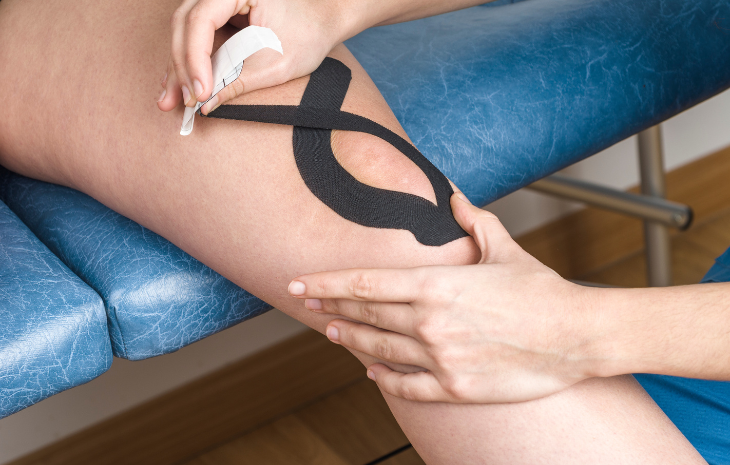
Another popular cut used in athletic tape is the horseshoe cut. This technique involves creating a U-shaped pattern around specific areas that require additional support or correction. For instance, when dealing with knee issues such as patellar tendinitis or instability, a horseshoe cut can be applied around the kneecap to provide targeted reinforcement while allowing flexibility during flexion and extension movements.
The X-strip technique is another valuable addition to an athlete's toolkit. By creating intersecting strips in an X-shape over a joint or muscle group, this method helps improve tracking and stability while reducing strain on ligaments. For example, when addressing ankle instability or cruciate ligament injuries, X-strips can effectively limit excessive movement without hindering range of motion.
The choice of cut depends on factors such as the desired level of support and the nature of the injury or condition being addressed. Each technique offers unique benefits tailored to specific situations:
- Anchor Strips: Provide a stable base for other taping methods.
- Horseshoe Cut: Offers targeted reinforcement while maintaining flexibility.
- X-strips: Improve tracking and stability without limiting range of motion.
When applying any type of sports tape, proper technique is crucial for optimal results. It is essential to ensure the skin is clean and dry before applying the tape to maximize adhesion. Understanding body mechanics and joint alignment is vital for accurate taping placement.
Athletes should also be aware of their individual needs and preferences. Some may require more support due to previous injuries or anatomical variations, while others may benefit from a lighter application for improved mobility.
Precautions, Contraindications, and Conclusion
In conclusion, understanding the precautions and contraindications. By considering these factors, you can ensure the safety and success of your taping treatments.
Some key points to remember include:
- Benefits and uses: Taping techniques have various benefits in physiotherapy treatment, such as providing support, reducing pain, improving stability, and promoting healing.
- Rigid strapping tape: This type of tape offers excellent support for joints and muscles, making it ideal for injury prevention or rehabilitation.
- Kinesiology tape: Kinesiology tape comes in different types with specific properties that cater to various needs. It can improve circulation, reduce swelling, and enhance muscle activation.
- Foot & ankle taping: Proper application techniques for foot and ankle taping can provide stability during physical activities or aid in recovery from injuries.
- Personal preferences: Each individual may have personal preferences.
- Sports taping principles: Understanding the principles behind sports taping helps in determining the appropriate cuts and techniques for specific injuries or areas of the body.
To make the most out of your taping treatments:
- Consult a qualified physiotherapist or healthcare professional who specializes in taping techniques. They can provide personalized advice based on your specific needs.
- Follow proper application instructions provided by experts or manufacturers to ensure correct technique and optimal results.
- Keep yourself updated with new research findings or advancements in taping techniques to stay informed about potential improvements.
Remember that while taping techniques can be beneficial in many cases, they should not replace comprehensive medical advice or treatment plans. If you have any concerns or questions about using taping techniques for your condition, consult a healthcare professional.
FAQs
Q: Can I apply kinesiology tape myself, or should I seek professional help?
A: While it is possible to apply kinesiology tape yourself, seeking professional help from a physiotherapist or certified taping expert can ensure proper technique and maximize the effectiveness of the tape.
Q: Are there any specific types of taping techniques for shoulder injuries?
A: Yes, there are specific taping techniques for shoulder injuries that aim to provide support and stability. Consult with a healthcare professional to determine the most suitable technique for your specific condition.
Q: Can taping techniques be used as a preventive measure for sports-related injuries?
A: Yes, taping techniques can be used as a preventive measure for sports-related injuries by providing support and stability to vulnerable areas. However, it is essential to consult with a healthcare professional to determine the appropriate technique based on your sport and individual needs.
Q: How long should I keep the tape on before removing it?
A: The duration for keeping the tape on varies depending on the type of tape and purpose. Generally, it is recommended to remove the tape after 3-5 days or as advised by a healthcare professional.
Q: Can taping techniques be used alongside other treatment modalities?
A: Yes, taping techniques can often be used in conjunction with other treatment modalities such as exercise therapy or manual therapy. It is important to consult with your healthcare provider to ensure compatibility and optimal integration of treatments.

